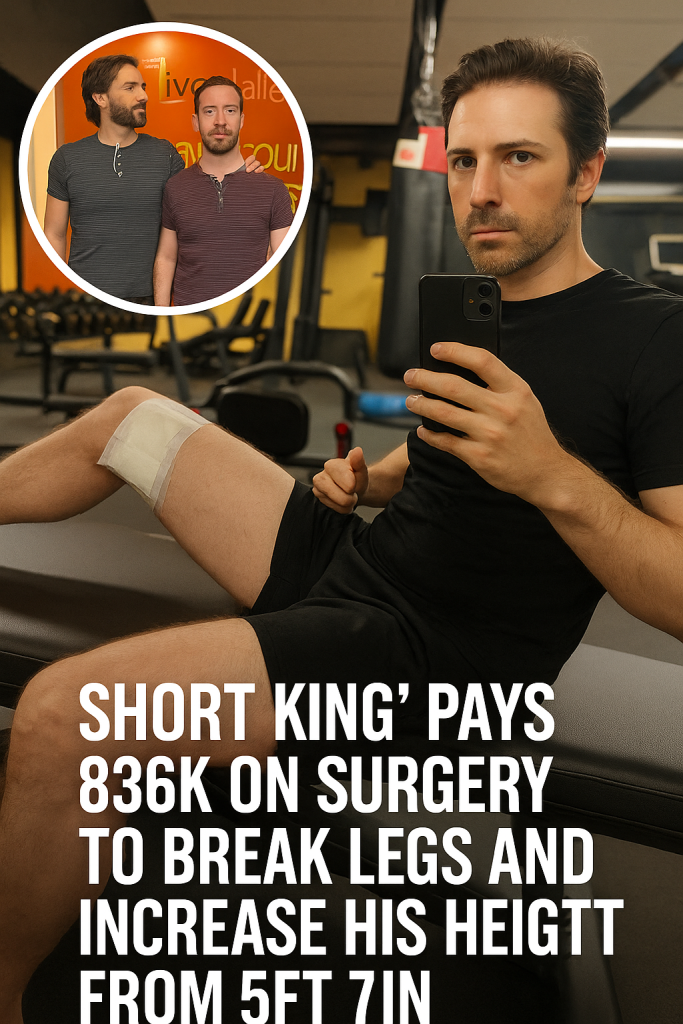In an extraordinary and painful quest to increase his stature, a man recently underwent a highly controversial and expensive leg-lengthening surgery, paying a staggering $36,000 for the procedure. Starting at 5 feet 7 inches tall, this individual embarked on a grueling medical journey that involved literally breaking his legs in a bid to grow several inches taller.
The surgery, which is rapidly gaining attention on social media and in medical circles, involves a complex and harrowing process known as distraction osteogenesis. This technique requires surgeons to surgically break the patient’s bones—usually the tibia and sometimes the femur—and then use an external or internal fixation device to gradually stretch the bone segments apart. Over time, new bone tissue fills the gap, allowing the legs to lengthen.
The lengthening process is painstaking and demands immense patience and resilience. Following the initial surgery, the patient undergoes a lengthy recovery period where the bone grows at a rate of about one millimeter per day. The entire process can take several months, during which the patient must carefully adjust the external device and endure significant discomfort and limited mobility.
According to descriptions shared online, the pain and physical strain are intense. The patient often cannot fully bear weight on the legs during the regeneration phase and faces the risk of complications such as infections, nerve damage, and muscle contractures. Despite these challenges, the man appears determined, reportedly explaining how “the excruciating process works” to fascinated followers and those curious about the lengths some will go to alter their physical appearance.
This procedure is not only financially burdensome but mentally taxing as well. It requires strong psychological preparation and ongoing medical supervision. Rehabilitation exercises are crucial to regain muscle strength and joint function after the bones have fully healed.
Experts warn that despite the allure of added height, this surgery is not without its controversies. Medical professionals stress that it is primarily intended for people with specific medical needs, such as limb length discrepancies or deformities, rather than purely cosmetic enhancements. However, an increasing number of healthy individuals worldwide are opting for this procedure, driven by personal and social pressures related to height.
As this story unfolds online, it sparks vigorous debate about body modification, societal expectations, and the ethical implications of elective surgeries that carry significant risks. The man’s willingness to endure suffering and the considerable financial investment highlights a fascinating intersection between medical innovation and personal identity.
With leg-lengthening surgeries becoming more accessible globally—albeit still rare—the discussion is expected to grow about the psychological impact, cost-effectiveness, and long-term consequences of such dramatic surgical interventions.
For now, this patient’s journey serves as a powerful example of how far some will go to change their physical selves and the extreme nature of procedures that challenge both body and mind.



